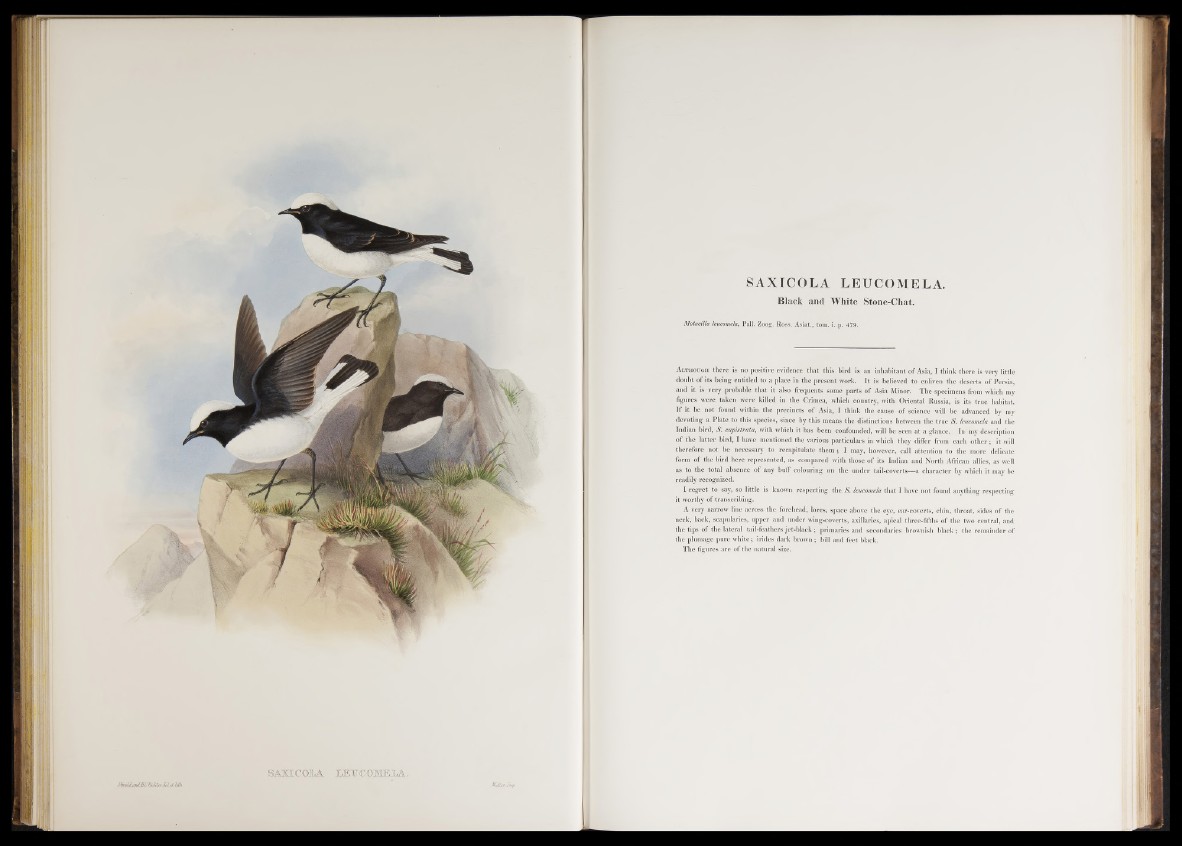
JGadí/mLEC.T{iclaa;3eL¿CWi
SAXÍCOLA LTPrtrCOTVTEL/
WiJlerJmp.
SAXICOLA LEUCOMELA.
Black and White Stone-Chat.
Motacilla leucomela, Pall. Zoog. Ross. Asiat., tom. i. p. 479.
A l th o u g h there is no positive evidence that this bird is an inhabitant o f Asia, I think there is very little
doubt of its being entitled to a place in the present work. I t is believed to enliven the deserts o f Persia,
and it i s ' very probable that it also frequents some parts of Asia Minor. The specimens from which my
figures were taken were killed in the Crimea, which country, with Oriental Russia, is its true habitat.
If it be not found within the precincts of Asia, I think the cause o f science will be advanced by my
devoting a Plate to this species, since by this means the distinctions between the true S. leucomela and the
Indian bird, S. capistrata, with which it has been confounded, will be seen at a glance. In my description
o f the latter bird, I have mentioned the various particulars in which they differ from each o th e r ; it will
therefore not be necessary to recapitulate th em ; I may, however, call attention to the more delicate
form of the bird here represented, as compared with those of its Indian and North African allies, as well
as to the total absence of any buff colouring on the under tail-coverts—a character by which it may be
readily recognized.
I regret to say, so little is known respecting the S . leucomela that I have not found anything respecting
it worthy of transcribing.
A very narrow line across the forehead, lores, space above the eye, ear-coverts, chin, throat, sides of the
neck, back, scapularies, upper and under wing-coverts, axillarics, apical three-fifths o f the two central, and
the tips of the lateral tail-feathers jet-black ; primaries and secondaries brownish black; the remainder of
the plumage pure white; irides dark brown ; bill and feet black.
The figures are of the natural size.